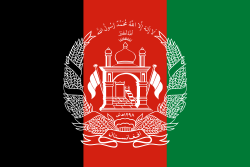British Tourist Claims 'Extreme' Holiday in Taliban-Controlled Afghanistan
 Afghanistan
AfghanistanOver 200 healthcare facilities operated by the World Health Organization (WHO) in Afghanistan have closed due to significant funding cuts from the U.S. government, affecting nearly 1.84 million people reliant on medical services. This alarming development follows the Trump administration's January 2021 decision to freeze over $40 billion in foreign assistance, resulting in a cancellation of more than 80% of USAID programs, according to WHO and Save the Children.
Most closures have occurred across 28 out of 34 provinces, compounding an existing humanitarian crisis exacerbated by poverty and disease outbreaks. Ajyal Sultany, WHO's communications head in Afghanistan, warned that vulnerable communities now face heightened risks of malnutrition and preventable diseases, including measles and polio.
In response to the funding cuts, Save the Children has shuttered 18 of its 32 clinics, which previously served over 134,000 children in January. The Norwegian Refugee Council has also closed community resource centers, citing similar impacts from U.S. funding disruptions. As the availability of healthcare continues to dwindle, experts fear the situation may deteriorate further unless new funding sources are identified.
 Afghanistan
Afghanistan Afghanistan
Afghanistan Afghanistan
Afghanistan